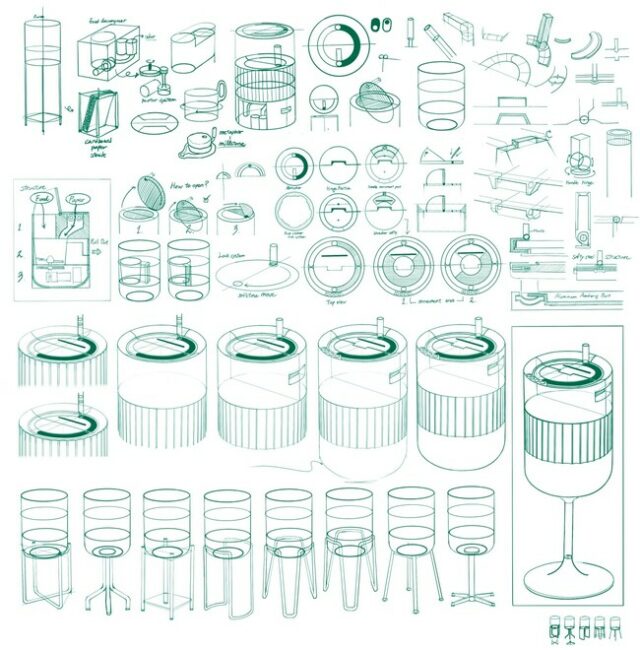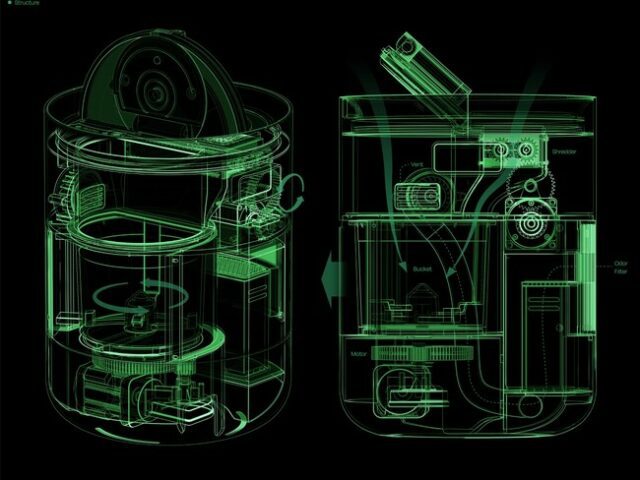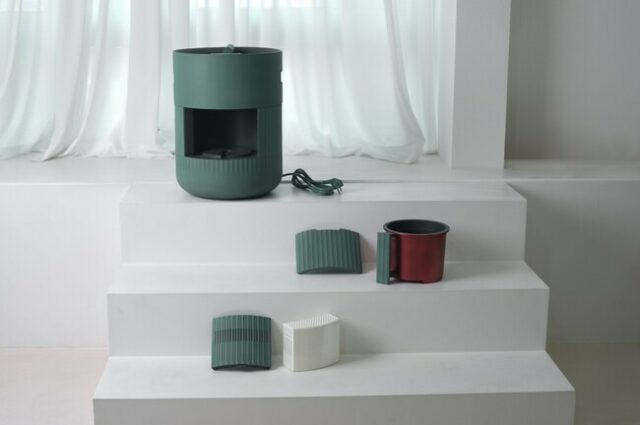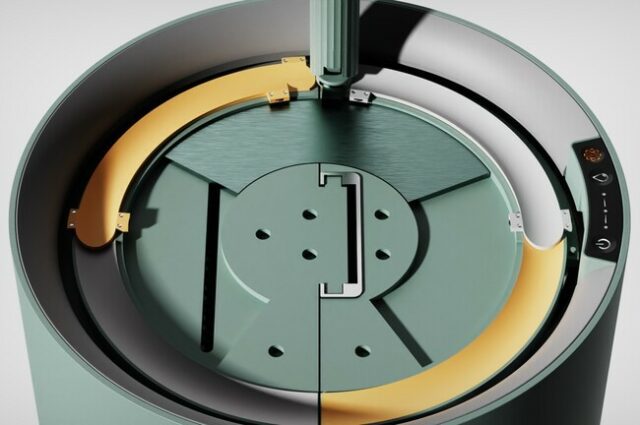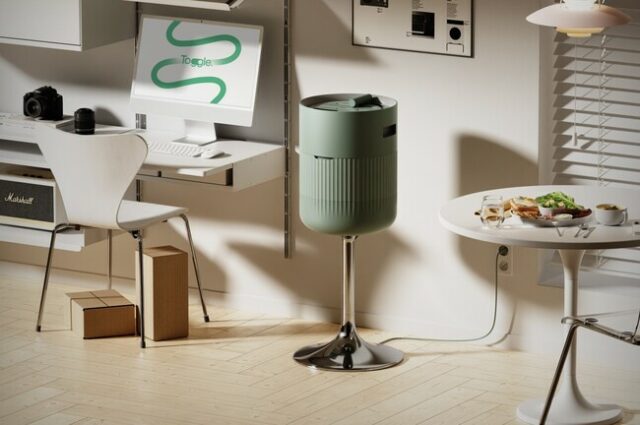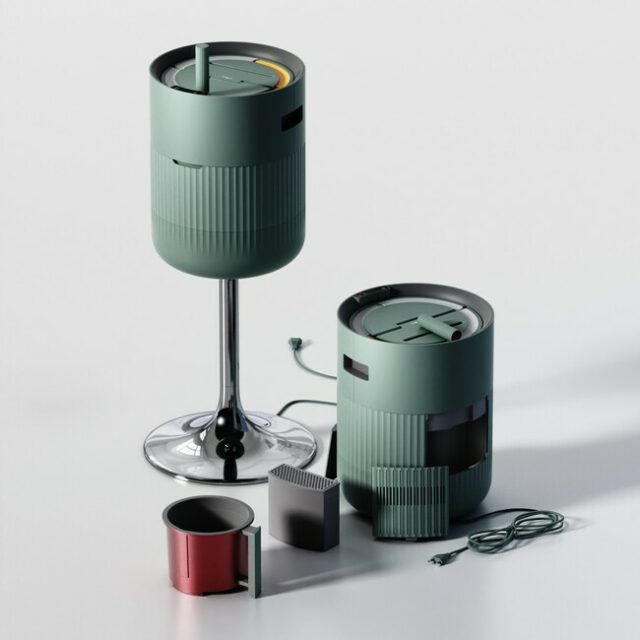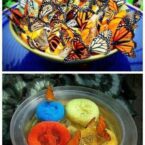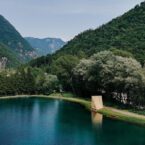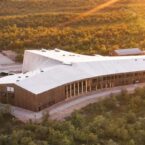
Colin Yong and his wife’s journey towards homeownership was a testament to perseverance and adaptability. Initially setting their sights on a build-to-order (BTO) apartment like many other young Singaporean couples, they found themselves thwarted by the daunting waiting lists and uncertainty of the process. After applying nine times for BTO and Sale of Balance flats without success, they decided to explore alternative avenues. Their eventual purchase of a $444,000 public housing apartment, built by the Housing and Development Board (HDB), marked a significant milestone in their lives. Located in the heart of Singapore’s Hougang neighborhood, their cozy five-room flat became not just a place to live, but a canvas for their shared dreams and ambitions.

At the core of their renovation project was the kitchen, where their culinary skills flourished and memories were shared. As graduates of a culinary school, the couple found solace and joy in creating a space that reflected their passion for food and hospitality. Despite the challenges they faced in securing their home, Colin Yong, 34, and his wife embraced the opportunity to transform their dated apartment into a modern sanctuary. Their story resonates with many young couples in Singapore who navigate the complexities of homeownership, often opting for resale flats or private properties when faced with lengthy wait times for BTO apartments. Through determination and creativity, Colin and his wife turned their humble abode into a haven where they could unwind with friends, celebrating not just their love for each other but also their shared journey toward creating a place they could truly call home.


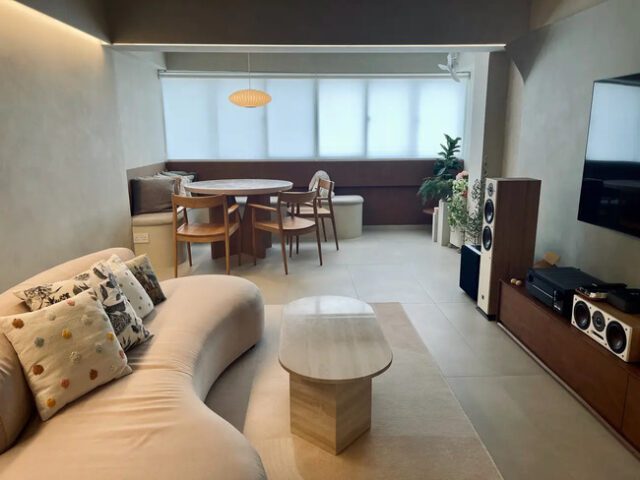
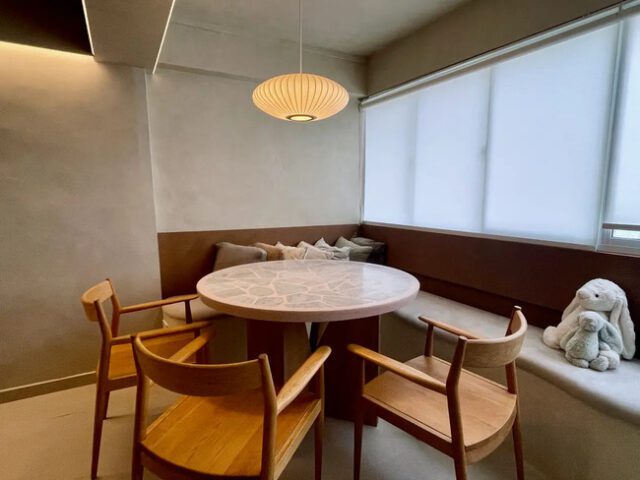
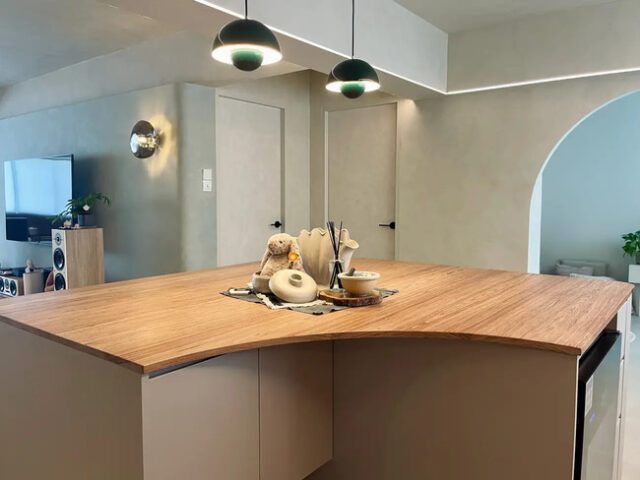
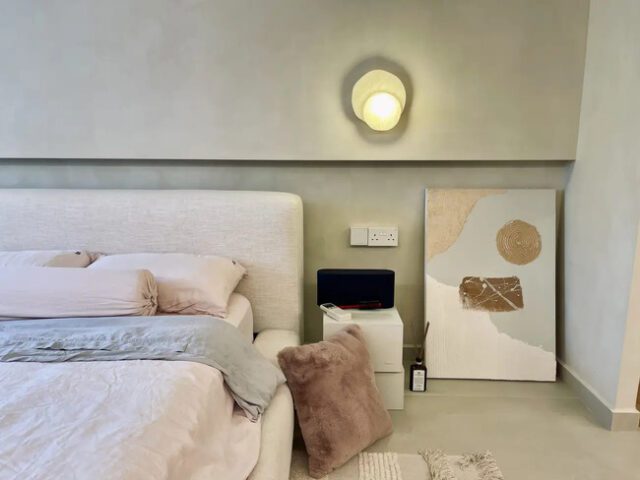


Rochelle Taylor-Butcher and Angus Ord’s journey from purchasing what they describe as an ‘unliveable’ flat to turning it into a cozy home reflects the power of determination and resourcefulness. The couple, driven by the desire to step onto the housing ladder, embarked on a daunting task without prior experience in renovation. Situated in Kingston, South London, their one-bed flat greeted them with peeling wallpaper, moldy walls, and a musty carpet, Continue reading “‘Looks unrecognisable!’: Couple’s ‘Unlivable’ Apartment Transformed with IKEA Buys & YouTube Videos, Saving Themselves £9K” »

In the heart of Aix-en-Provence, amidst the sun-drenched landscapes that once inspired Paul Cézanne’s masterpieces, a hidden treasure has been unveiled within the walls of the artist’s family home. Long thought to have been meticulously cataloged, the Bastide du Jas de Bouffan, where Cézanne spent his formative years, continues to reveal secrets from its artistic past. The recent discovery, made during a renovation of the illustrious “Grand Salon” in August 2023, has astounded the art world, shedding light on a previously unknown mural hidden beneath layers of plaster and wallpaper.

The fragmentary remains of the mural, showcasing a maritime scene with billowing ship masts and fluttering banners, evoke a sense of Cézanne’s enigmatic vision. Although the central and lower sections have been lost to time, leaving spectators to ponder the mysteries concealed within, the unveiling of this forgotten artwork has reignited interest in the artist’s early oeuvre. With plans underway to integrate the newly discovered mural into the restored Bastide du Jas de Bouffan, visitors will soon have the opportunity to immerse themselves in Cézanne’s world, experiencing firsthand the evolution of his genius from its nascent stages. As Aix-en-Provence prepares to celebrate the legacy of its prodigal son in 2025, the rediscovery of this hidden gem serves as a poignant reminder of Cézanne’s enduring influence on the world of art.


Faith Snapp, a legally blind student from Texas, is defying the odds by pursuing her dream of becoming a veterinarian. Despite her visual impairment, which limits her to about 10% vision, Snapp has never allowed her disability to hinder her passion for animals. Growing up surrounded by horses, goats, and other farm animals, she developed a deep love and appreciation for creatures of all kinds. With determination and perseverance, coupled with the support of her family and a guide dog she received in high school, Snapp has overcome numerous challenges on her path to achieving her goals.

In a recent interview with Fox News, Snapp emphasized the importance of believing in oneself and maintaining a positive outlook in the face of adversity. Her remarkable journey serves as an inspiration to others, demonstrating that with unwavering faith and the right support system, anything is possible. Despite the hurdles she has faced, Snapp remains steadfast in her resolve to become a veterinarian, with plans to specialize in caring for both household pets and larger animals. As she prepares to embark on this new chapter at Texas Tech University School of Veterinary Medicine, Snapp hopes that her story will empower others to pursue their dreams relentlessly, regardless of the challenges they may encounter along the way.

The Vertical Farm Beijing, crafted by Van Bergen Kolpa Architects, stands as a beacon of innovation and sustainability amidst Beijing’s urban landscape. Adorned with pleated glass facades that enfold the structure, it presents a striking image of modernity and functionality. Designed in collaboration with AgriGarden and the Chinese Academy of Agricultural Science (CAAS), this pioneering architectural marvel integrates vertical farming techniques with educational and research facilities. The multifaceted design not only provides an aesthetically pleasing appearance but also embodies practical solutions for urban horticulture. With a keen focus on sustainability, the building incorporates water reuse systems, passive heating strategies, and natural cooling methods, showcasing a holistic approach to addressing food production challenges in densely populated urban environments.

Spanning three floors and covering 3,500 square meters, the Vertical Farm Beijing serves as a dynamic hub for vertical cultivation methods and agricultural education. Visitors are guided through a captivating journey, witnessing the wonders of open-ground fruit trees, automated lettuce cultivation, and rooftop greenhouses flourishing under natural daylight. This innovative approach not only revolutionizes urban food production but also serves as a platform for knowledge dissemination and community engagement. By emphasizing resource efficiency and practical design elements, Van Bergen Kolpa Architects have set a precedent for sustainable urban development, highlighting the vital intersection between architecture, agriculture, and environmental stewardship in shaping the cities of tomorrow.






Wallwerx emerges as a revolutionary solution in the realm of modular organizing systems, surpassing even IKEA’s famed pegboards in flexibility and adaptability. Inspired by the simplicity of hundreds of hooks proposed in a Seinfeld episode, Wallwerx takes the concept to new heights. While pegboards initially gained popularity in workshops for tool organization, Wallwerx expands its utility to virtually any space in the home. Designed by DIY enthusiast Mark Zalme, frustrated by the limitations of traditional pegboards, Wallwerx offers a versatile array of attachments that can be mounted directly onto walls or standard pegboards, providing seamless integration into any environment.

The brilliance of Wallwerx lies in its simplicity and versatility. Its modular design, comprising a baseplate and a variety of attachments, allows for effortless customization to meet the diverse needs of users. Whether in the kitchen, garage, closet, or study, Wallwerx offers an unparalleled level of organization. From hooks for hanging items to clips for securing jars of various sizes, Wallwerx provides solutions for storage challenges across different settings. Made from high-strength plastic and manufactured in the US, Wallwerx ensures durability and reliability, even in demanding environments like workshops. With kits tailored for specific purposes, such as the Home Kit for workbenches or the Werxshop Kit for comprehensive garage organization, Wallwerx offers a solution for every organizational need, empowering users to transform any vertical surface into a functional storage area effortlessly. It can be purchased via Kickstarter for $69.


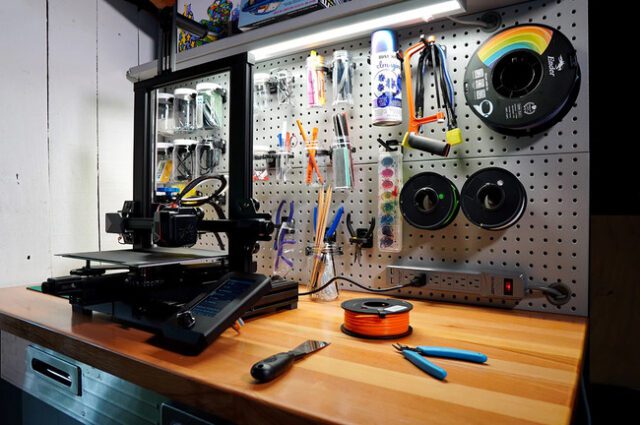

The fusion of futuristic design elements and motorsport-inspired engineering culminates in this awe-inspiring Batmobile, primed for its debut in the highly anticipated Batman 2 flick slated for a 2025 release. With sleek contours and a menacing silhouette, this ultra-futuristic marvel exudes an aura of power and sophistication, perfectly befitting the Dark Knight’s iconic persona. Drawing inspiration from the adrenaline-fueled world of motorsports, this Batmobile transcends conventional boundaries, seamlessly blending cutting-edge technology with unparalleled ingenuity. From its imposing size to its formidable spiked wheels designed for unrivaled traction, every aspect of this crime-fighting machine screams dominance on the streets of Gotham.

Its low-slung profile and wide tires, reminiscent of high-performance racing cars, ensure unparalleled agility and stability, whether navigating through the city’s labyrinthine alleys or pursuing villains across treacherous terrain. With a rear wing inspired by Formula-1 aerodynamics, this Batmobile boasts enhanced downforce, enabling it to maneuver with precision at breakneck speeds. Adorned with small red LED headlights and fog lamps, coupled with a striking matte titanium grey finish juxtaposed against glossy bodywork, this Batmobile epitomizes a perfect amalgamation of intimidation and modern elegance. As the ultimate embodiment of automotive innovation, this Batmobile promises to leave an indelible mark on both the silver screen and the imaginations of enthusiasts worldwide.






The Honeylion Tiny Home stands as a revolutionary solution within the burgeoning tiny house movement, addressing a crucial aspect often overlooked in compact living: hosting guests. Modern Tiny Living’s innovative approach integrates a flexible layout and space-saving furniture, transforming the conventional challenges of space constraints into opportunities for versatility. Spanning 36 feet and mounted on a quad-axle gooseneck trailer, the Honeylion boasts a striking exterior with its engineered wood finish and vibrant red steel roof. Upon entry, guests are greeted by a well-appointed kitchen featuring essential appliances, ample cabinetry, and a double sink, setting the stage for seamless culinary experiences. Transitioning further into the living area, likened to a Swiss Army Knife by its designer, a U-shaped seating arrangement awaits, comfortably accommodating six individuals while cleverly concealing storage compartments beneath. This multipurpose space effortlessly converts into an additional sleeping area, ensuring overnight guests can rest comfortably without sacrificing floor space.
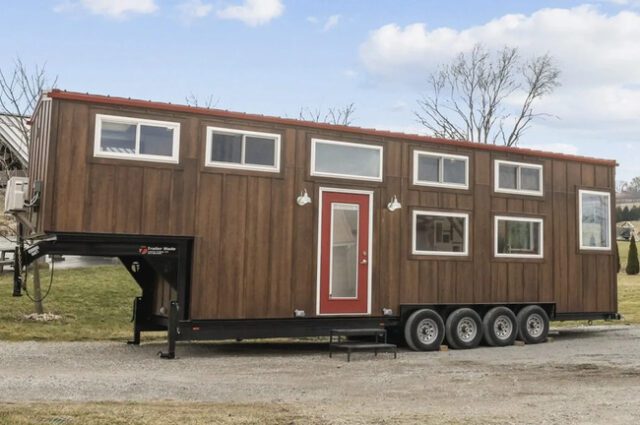
Moreover, the Honeylion elevates tiny home living with its luxurious bathroom amenities, including a composting toilet, sink, and generously sized bath/shower combination, complemented by the convenience of an adjacent washer/dryer unit. Emphasizing practicality without compromising comfort, the Honeylion features two thoughtfully designed bedrooms. The master bedroom, situated in the raised portion of the trailer, offers ample headroom and a double bed that seamlessly retracts into the wall, maximizing floor space during waking hours. Meanwhile, the second bedroom, nestled in the loft area accessible via integrated storage steps, presents a cozy retreat with space for two single beds, showcasing the quintessential charm of loft-style living. With its innovative design and thoughtful utilization of space, the Honeylion Tiny Home redefines the possibilities of compact living, inviting individuals to experience unparalleled comfort and functionality within a modest footprint.
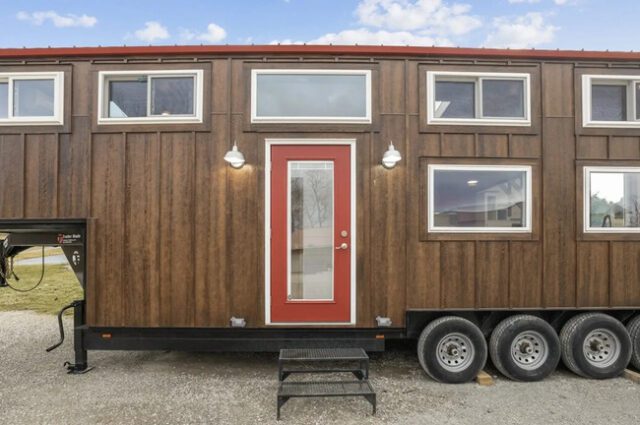


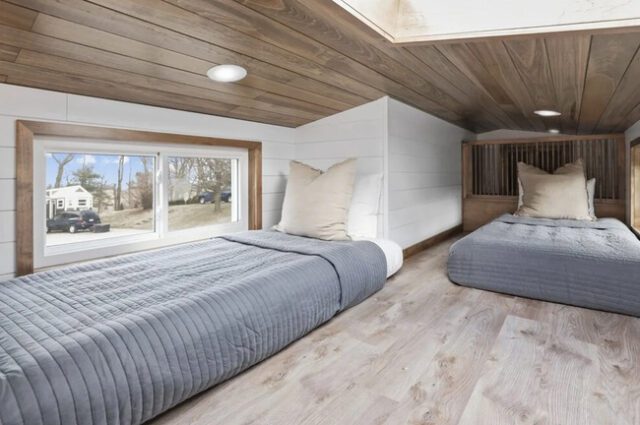


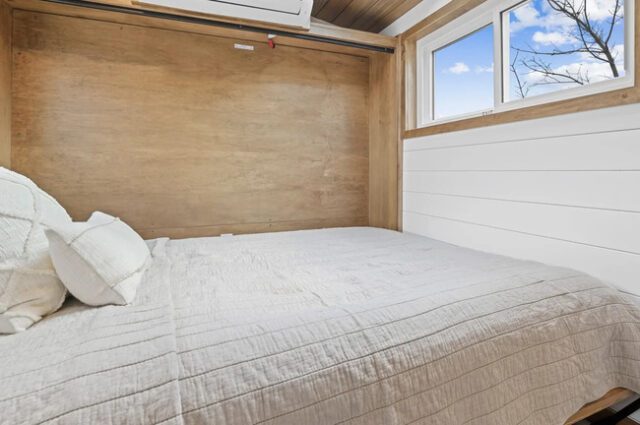


The concept of the food compost bin, known as Toggle, addresses the growing concern about food waste and its environmental impact. With the shift in eating habits, particularly the surge in food delivery services, our lifestyles have become more convenient but at the expense of generating substantial waste. Despite efforts to promote healthier food options and sustainable packaging, the overall reduction in waste remains a challenge. Toggle seeks to transform this scenario by turning not only uneaten meals but also their packaging into a valuable resource for plant growth. By combining both edible and inedible parts of delivered meals, Toggle employs a mix of “green” materials like food waste and “brown” materials such as paper, cardboard, or wood.

Toggle’s ingenious design involves a shredder to break down cardboard and wood into tiny particles and a grinder to process food waste. Through heating, the components are condensed, resulting in a homemade fertilizer resembling soil that can be utilized for indoor and outdoor plant cultivation. The device efficiently streamlines the composting process at home, eliminating the need to transport materials to recycling or composting centers. Despite the potentially messy nature of waste management, Toggle is aesthetically crafted to resemble a stylish and sophisticated can, integrating safety features for households with children. By seamlessly blending responsibility with convenience, Toggle encourages a more sustainable and eco-friendly lifestyle, ensuring that both personal well-being and environmental health are considered in daily choices.
